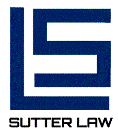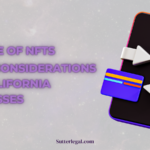Internal Revenue Code (I.R.C.) Section 1202 provides for the enactment of the Qualified Small Business Stock (QSBS) exclusion. In summary, the exclusion allows an eligible taxpayer to potentially exclude up to 100% of the eligible gain realized from the sale of qualifying stock.
Every year, the amount of gain eligible for the QSBS exclusion by a taxpayer is equal to the greater of $10 million or 10 times the taxpayer’s adjusted basis in the QSBS being sold. If QSBS is inherited or gifted, this restriction can be increased since it is a per-tax-payer limitation.
The percentage of gain that a taxpayer can exclude is dependent on when the stock was issued. For example, QSBS issued before August 11, 1993, is not eligible for the QSBS gain exclusion. Stock issued between August 11, 1993, and February 17, 2009, is eligible for a 50% gain exclusion. Additionally, QSBS issued between February 18, 2009, and September 27, 2010, is eligible for a 75% gain exclusion. Finally, QSBS issued after September 28, 2010, is eligible for a 100% gain exclusion.
If the gain is not excluded by I.R.C. Section 1202, then the gain is taxed at a rate of 28%. Additionally, the gain will be taxed at a rate of 3.8% for net investment income tax.
Benefits of using the Qualified Small Business Stock
Although the benefits of using the Qualified Small Business Stock (QSBS) exclusion are copious, only domestic entities subject to federal income tax as C corporations may issue QSBS. Domestic S corporations may not issue QSBS. However, other entities, such as Partnerships or S corporations can transfer assets to a new C corporation in exchange for QSBS. Notably, LLCs that elect to be taxed as C Corporations are eligible for the QSBS exclusion.
The issuing C corporation may not have more than $50 million in aggregate gross assets before or up until directly after the issuance of the stock. Aggregate gross assets connote the amount of cash and the aggregate adjusted basis of other property held by the corporation, aside from contributed property. Contributed property is valued at its fair market value at the time such property is contributed to the corporation, which is different from the adjusted tax basis of that property.
The issuing C corporation must use at least 80% of the fair market value of its assets in the active conduct of one or more qualified trades or businesses. This use must be sustained for substantially all the shareholders’ required QSBS holding period. A qualified business or trade is precisely defined in I.R.C. Section 1202. Contact the attorneys at Sutter Law to determine whether you are operating a qualified business or trade.
Generally, any entity apart from a C corporation can hold QSBS. For pass-through entities, further requirements must be met for the non-corporate owners of the pass-through entity to qualify for QSBS treatment.
The eligible shareholder must have acquired the shares via an original issuance. More precisely, the stock cannot have been purchased from another shareholder. However, the shares are not required to have been issued by the company as part of its initial formation. Lastly, the taxpayer who initially issued the stock must be the holder and final seller of the QSBS to qualify for tax exclusion treatment.
Shares must be held for more than five years in order to qualify for QSBS exclusion benefits. Typically, the holding period commences when the shares were issued, but specific rules apply when the shares are issued in exchange for conversion of other stock or non-cash property.
In conclusion
The revenue code providing for the Qualified Small Business Stock (QSBS) exclusion is highly nuanced and the appropriate application is best determined by a skilled attorney. The experienced and detail-oriented attorneys at Sutter Law can help you navigate and simplify the otherwise complicated QSBS exclusion requirements. Contact us today so that we can potentially save you a significant sum of money when you sell your shares.
Contact the attorneys at Sutter Law today!






